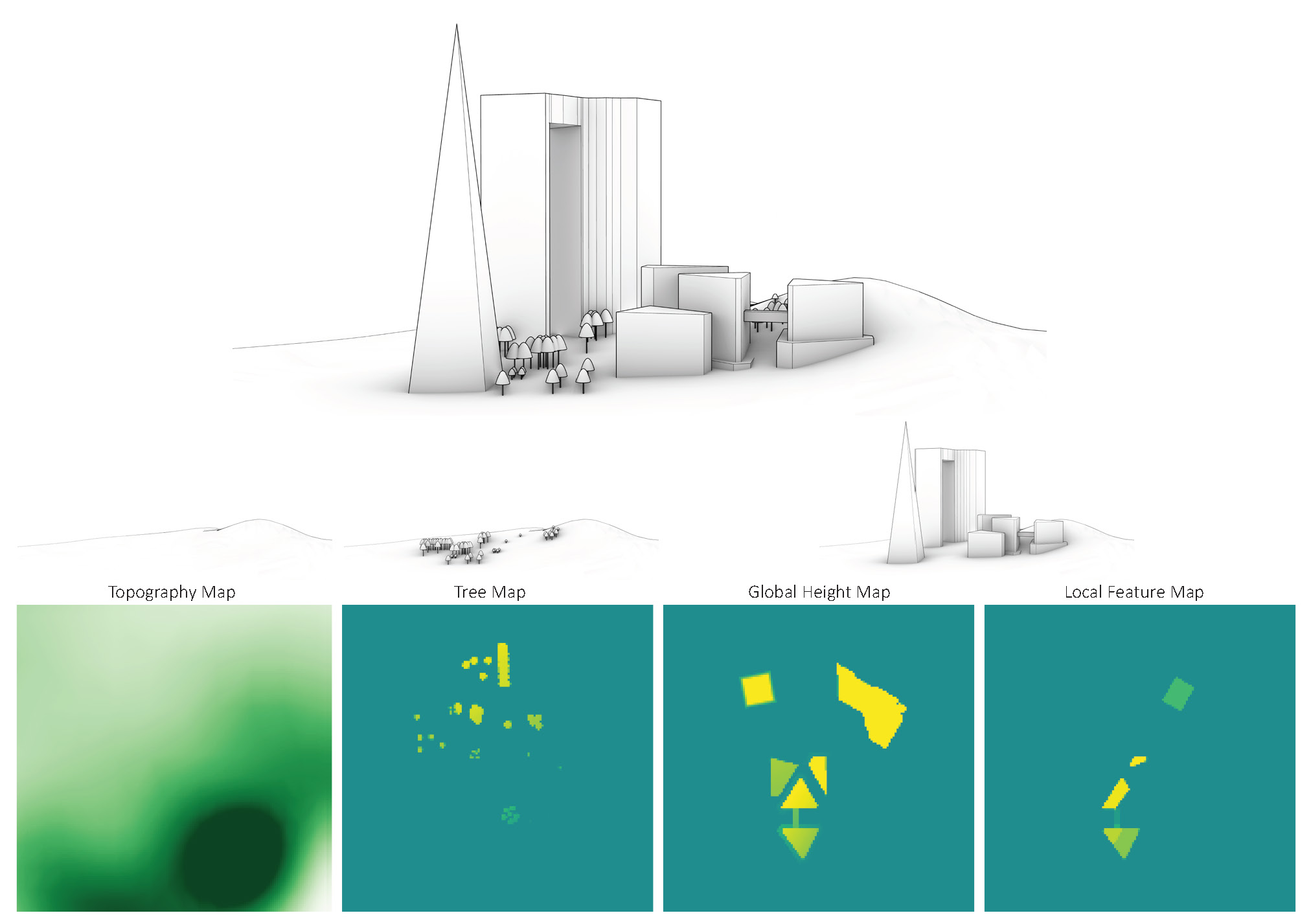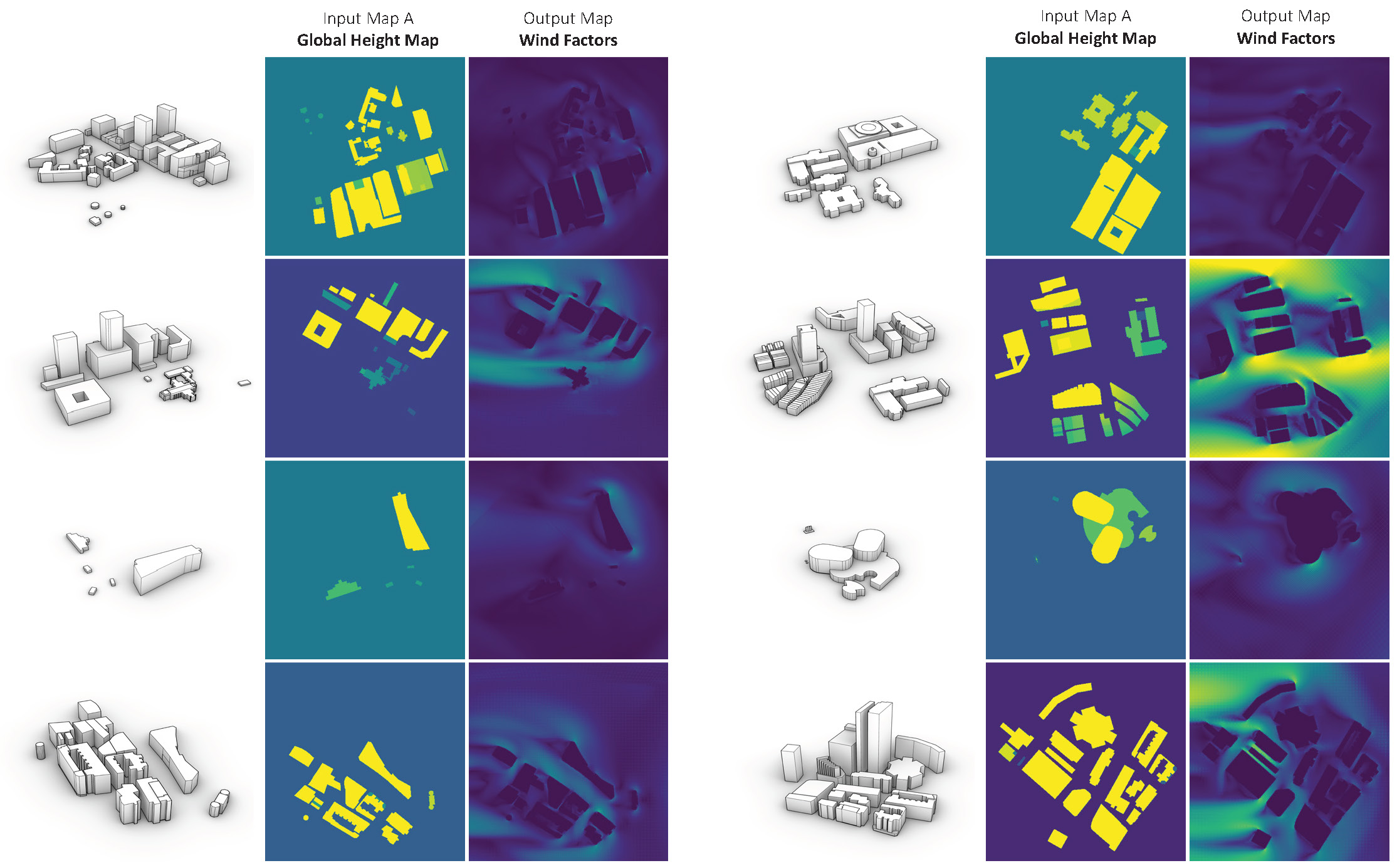Multi-Layered Urban Representation for Learning
This work develops a data-driven workflow for real-time pedestrian wind comfort estimation in complex urban environments, challenging 2.5D representations in deep learning workflows for urban applications. Four input channels are used to represent the urban context representing respectively global height features, subtractive local features (such as tunnels, carved balconies, arcades, etc.), topography and additive local features (such as trees, shading devices, etc.). The results show the model’s capacity to infer wind factors at an accuracy of ±0.2 within seconds.
- TypeAcademic
- AffiliationMassachusetts Institute of Technology, 2021
- RoleLead author
- ContributionConceptualization, Methodology, Data generation and simulation, Investigation, Formal analysis, Visualization, Validation, Software.
- Categories Research Urban Geometry Performance


